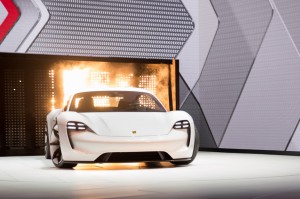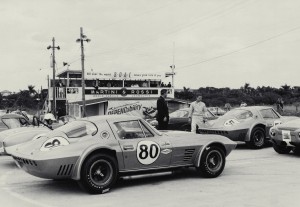
Off to a rocky start? Our spy photographer thinks GM is on the wrong path with its mid-engine Vette.
Drop the mid-engine Corvette. Now.
It’s time for GM to stop its development of an icon vehicle, the 20?? mid-engine Corvette. Yes, the long, long overdeveloped car that has diverted GM’s innovational (?) attention for over 25 years. The car could be way behind what is happening in the 2-seat racing-type model of today.
Huge changes are ongoing in the automobile business. We all see that. Car companies are formed and reformed, replaced, absorbed. New technologies are in huge development – autonomous cars and trucks are surely on the way. Electrics are moving – in some instances, shoved – on the scene, replacing the internal combustion engine.
(Porsche planning super-fast charging network to support launch of Mission E electric sports car. Click Here for the latest.)
Even though the future of the Vette’s current project looks shaky (see photo) GM continues old-time, piston engine development, eschewing the benefits of an electric car that would position the brand as a leader in the changes affecting the auto industry today.
Think of the advantages of electrics over pistons:
– Forget the advantages, like balance, of a mid- engine piston design under process now. An electric can locate its (battery) weight anywhere, but you can bet its center of gravity would be low, low, low. All lower than the internal combustion V8s.
– Never worry about where to place the coolant radiator. Hide it or display it, depending on the designer’s choice. Many other design options like this one.
– Forget the restrictions of rear-wheel drive. An electric can easily match that, plus offer “any-drive” wheels where it’s called for – on sloppy roads or high-speed tracks.
– Consider the leadership image GM would assume with a Corvette electric switch – up front in the minds of everyday opinion, plus up front at the lines of checkered flags.
(Jaguar plugs in. Click Here for our report on the official debut of the new Jaguar I-Pace.)
We could go on, but the verdict seems clear: GM, get working on an electric Vette now. Flick the switch.
(At a Chevrolet press conference some 25 years ago a Corvette engineer was posed with this question: “How is the progress with the mid-engine Vette coming along?”

Porsche wants to have ultra-fast Level 4 chargers ready when Mission E hits U.S. dealer showrooms next year.
The answer was immediate: “Jim, I could tell you, but then I’d have to shoot you.”)
Editor’s Note: We have to agree with the premise that GM should be working on more than just mainstream electric vehicles like the Chevrolet Bolt EV. The good news, according to several very highly placed product development executives we’ve spoken to, is that there is a performance electric program in the works.
What it is and what products may be involved, well, they just won’t say. We do know that Ford has a hybrid version of the Mustang in the works. And, during a news conference at the North American International Auto Show, it teased an all-electric supercar, tentatively named Mach 1, which will roll out in 2020.
Tesla, Porsche, Audi, Aston Martin, Nissan, the list of brands bringing performance electric models to market is set to explode over the next decade. We fully expect GM to joint that list, even with a conventionally powered mid-engine Corvette in its line-up.
(Click Here for more on Ford’s Mach 1 plans.)


Shows what you know about Corvettes and GM, there is an E Ray in the future, but if you think Petrol Burning Cars are going by the wayside you are very wrong. I’m not saying there isn’t a spot, a welcome spot for e racers and its coming, but the Fuel burning racers are a long way from being extinct.
No one cares about electric vehicles other than Marketing departments. Unless you failed Physics, you would understand the laws of thermodynamics dictate that full-on electric vehicles will never become the norm, and most industry people have basically stated as much. You would require an increased amount of fossil fuel to generate enough electricity to charge / power these vehicles, and in the US, that’s not going to happen.
It’s different in Europe, where some countries don’t have the resources to continue with fossil fuels (which is why Ukraine is such a hot issue in geopolitics). Some countries have increased their investment in nuclear, and until the US does the same (and by that, I mean nuclear fusion R&D), there’s no point.
It’s funny how poorly the media has portrayed this, as if that’s what consumers want. In 2016, there were 1.2M electric vehicles sold globally, against a total of 77.25M cars sold. THAT’S 1%!!! Why would GM – a company in the business to MAKE MONEY go after a market that currently represents 1% of the TAM???
Stick to writing about cars – leave the business stuff to business people. GM knows exactly what they are doing.
LOL…I have personally been a business writer, as well as an automotive journalist, for 30+ years.
As for the business of electrification, well, let’s see what will happen. Demand is, unquestionably small, but the last year has shown strong momentum in the U.S., and even more in key markets like China. Dismiss electrics at your own peril, even if you want to try to justify your stand on physics. One of the more telling factors to consider is that buyers who have gone electric are surprisingly positive in their review of their vehicles, even shorter-range, lower-performance models. I think it is FAR too early to tell what will happen.
Paul E.